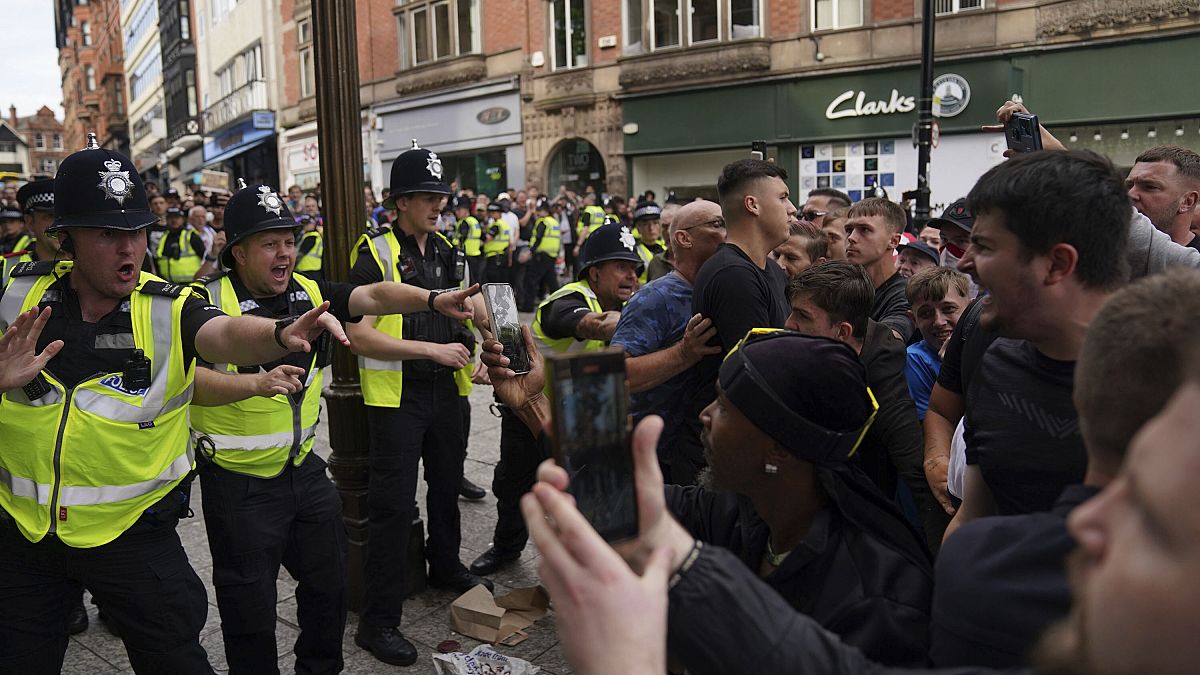Midwest
Reporter's Notebook: A portrait of Middletown, Ohio, home to JD Vance
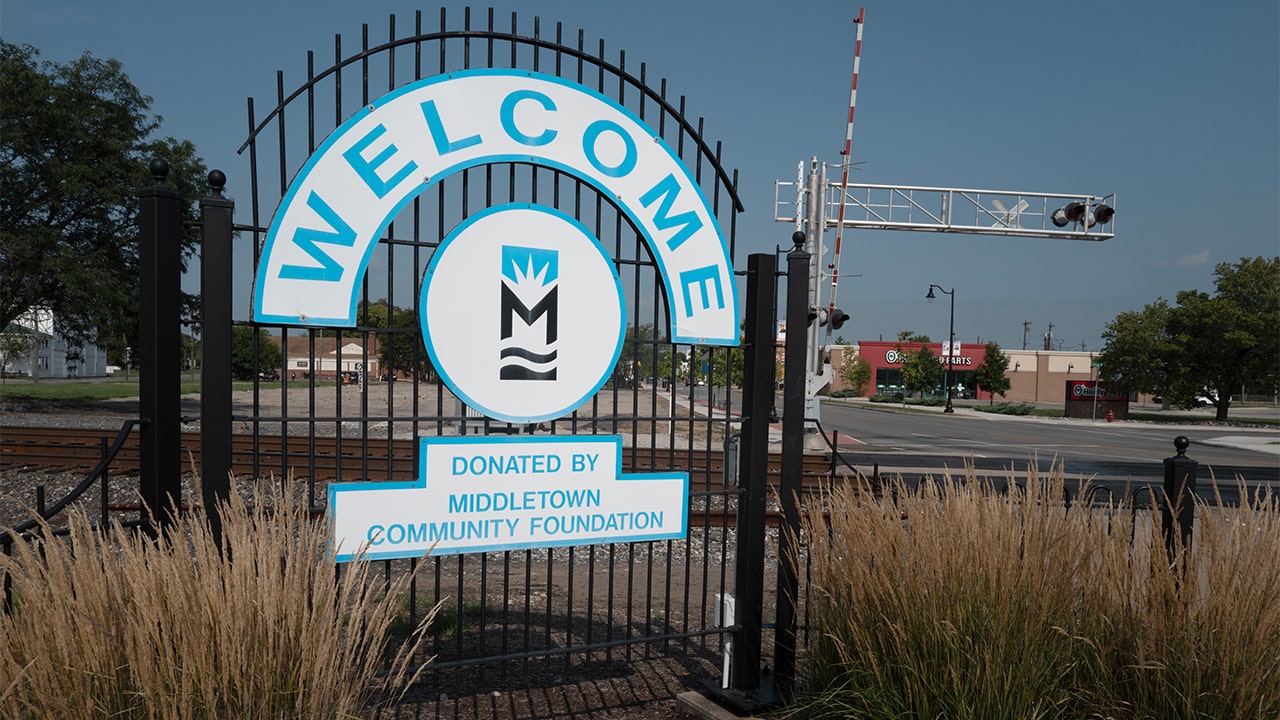
“Like most small children, I learned my home address so that if I got lost, I could tell a grown-up where to take me.”
Those are the opening lines to “Hillbilly Elegy,” the memoir by Republican Vice Presidential nominee and Sen. JD Vance. It documents his rocky childhood growing up in Jackson, Kentucky, and Middletown, Ohio.
Like Vance, I, too, learned my address for the same reasons. In fact, the geography is pretty similar. I was born in Middletown, just like Vance. But I was raised just west of there. I can’t claim Middletown residency like Vance, Pulitzer Prize-winning columnist Clarence Page of the Chicago Tribune, basketball Hall of Famer Jerry Lucas, football Hall of Famer Cris Carter or baseball All-Star Kyle Schwarber.
I didn’t graduate from Middletown High School like Vance. However, I spent a lot of time in Middletown growing up. I know Middletown about as well as any place on Earth.
JD VANCE’S HOMETOWN OF MIDDLETOWN, OHIO, WAS BUILT BY STEEL INDUSTRY: WHAT TO KNOW ABOUT IT
A welcome sign invites visitors to downtown Middletown, Ohio. (Scott Olson/Getty Images)
Both of my parents graduated from Middletown High School. My dad worked for four decades at ARMCO Steel, a major plant in Middletown. In “Hillbilly Elegy,” Vance writes about how the fate of Middletown was linked to ARMCO, now known as Cleveland-Cliffs. I spent countless hours visiting my maternal grandmother who lived in Middletown. Like Vance’s family, grandparents on both sides of my family migrated from eastern Kentucky to Middletown to work at ARMCO.
Middletown was predominant in our lives.
We went to the doctor and dentist in Middletown. We shopped in Middletown. We attended church in Middletown. In 1976, I watched President Gerald Ford roll down Verity Parkway in an open-air convertible in Middletown.
As I grew older, I bought cassette tapes of Def Leppard and Iron Maiden in Middletown. We dined regularly at Frisch’s and a hamburger stand called The Jug in Middletown. I took a few classes at the Miami University (Ohio) branch in Middletown. I played basketball and soccer in Middletown. And I ran laps at the indoor track and swam at the YMCA there, too.
I still swing through Middletown to this day. I regularly buy a small cake or a box of smiley face cookies from the Central Pastry. I have never encountered another establishment which can rival the butter cream icing of the Central Pastry.
Vance worked as a cashier at Dillman’s, a local grocery store. Roger Dillman, who owned the store, sponsored me as a delegate to attend Buckeye Boys State. It’s a nationwide government politics program operated by the American Legion.
Starting in junior high, I studied vocal performance under the legendary Helen Ramsdell in Middletown. She taught music from her stately home on Central Avenue. In addition to yours truly, Ramsdell famously taught the McGuire Sisters back in the 1930s. Look ‘em up, kids.
Some of my most formative experiences unfolded in Middletown during my high school years.
The local arts organization ran a program called Summer Youth Theatre in Middletown. Students as young as 12 and as old as 18 could audition for a show, usually a musical. The performances often fell around the end of July or first of August at Middletown High School. In fact, if you examine some of the video from Vance’s rally last week at the school, you can spy the raised portion of the building which still serves as the auditorium.
At the time, Middletown High School had one of the best high school theater facilities in the state, a sprawling, wooden stage. It featured built-in footlights and an apron that jutted into a chasm that doubled as the orchestra pit. The backstage was spacious. It was deep enough to carry several layers of curtains, travelers and scrims. There was a set shop and a commodious makeup room, as well as two dressing rooms for the performers.
My high school to the southwest of Middletown had none of those things. We had a “raised garage” in the “cafetorium.” So, performing at Middletown each summer was a thrill. I acted in “Oklahoma!,” “South Pacific,” “Gypsy,” “Li’l Abner,” “Bye-Bye Birdie” and “George M!” It was great fun. Plus, you got to meet and hang out with kids from other schools.
VARIETY’S FILM CRITIC WRITES ‘HILLBILLY ELEGY’ FILM ‘MAY HAVE CREATED A MONSTER’ LEGITIMIZING JD VANCE
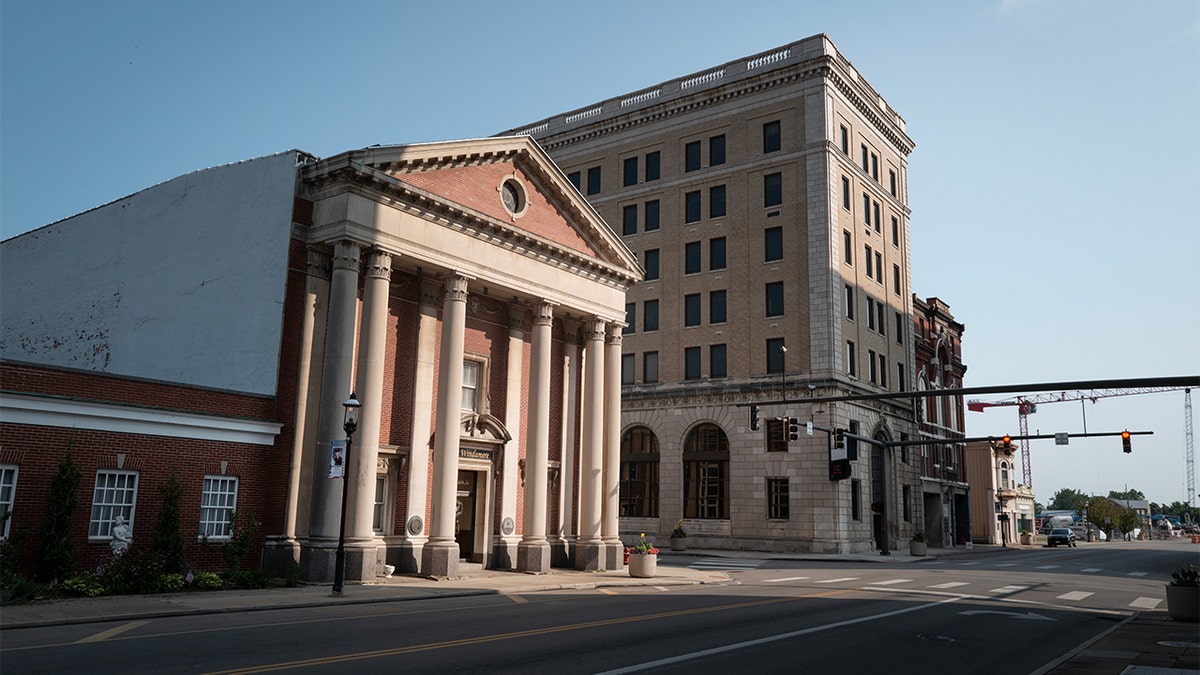
Buildings in downtown Middletown, Ohio (Scott Olson/Getty Images)
After rehearsal each night, many of us would drive down Briel Boulevard in Middletown to find something to eat. It’s doubtful that any thoroughfare in America could boast of such a dense concentration of fast-food joints and other eateries: Burger King, Long John Silvers, Friendly’s, Famous Recipe Fried Chicken, Rax Roast Beef, McDonald’s, Wendy’s, White Castle, Pizza Hut, Captain D’s. There was an Arby’s around the corner along with a local pizza place called Cassano’s. If we were out really late, a few of us might head to Milton’s Donuts. Milton’s stayed open all night.
As kids do, we’d talk about our aspirations, our hopes and our dreams. But for most of us, we were going to leave Middletown to make it big in theater, or music or movies. These dreams were all fueled by an ice cold Coca-Cola and a bacon double cheeseburger from Burger King.
Even though I spent a lot of time in Middletown, I always considered my visits as “going into town.” After all, we were from the country.
In fact, Middletown was a place I looked up to at the time. It wasn’t Cincinnati or Dayton or New York or Chicago. But it seemed more sophisticated than the country landscape where I lived. Middletown had a vibrant arts scene. There was an art gallery and regular classical music performances. There was a “grown-up” theater troupe and several movie theaters.
The houses seemed nicer in Middletown. Many of the students seemed a little better off. Their parents might have worked at ARMCO. But maybe they were employed on the corporate side of things. They weren’t blue-collar workers like my dad.
It always seemed like there was more to do in Middletown than out where we lived.
But something was afoot in Middletown that I didn’t realize at the time.
Middletown was a “company town” because of ARMCO, but ARMCO began bleeding cash in the 1980s. The recession of the time hurt American steel manufacturers. The influx of foreign cars into the U.S. market exacerbated things, just like the “dumping” of cheaper steel into the American market from abroad.
ARMCO slashed jobs. Kawasaki purchased ARMCO, forming a new firm named AK Steel. It temporarily shifted the headquarters from the vaunted “Central Offices” in Middletown to Pennsylvania. There was a brief lockout at ARMCO in 1987. There was nearly a strike in 1990.
I always parachuted into Middletown when I would come home from Washington. Sometimes, just to catch up with friends or go grab a meal. But things were evolving.
Eventually, people moved out of Middletown. They may not have moved to Washington, D.C., like me, but they left for bigger cities like Cincinnati or Columbus. AK Steel remained in business. Middletown didn’t become Youngstown or East Chicago. But the place wasn’t quite what it was decades ago. The global economy evolved, thanks to outsourcing and congressional adoption of the North American Free Trade Agreement (NAFTA).
This is what makes Middletown an American story.
I really noticed changes in Middletown after the financial crisis of 2008. The streets were ruddy and worn. A mall on the eastern side of the city near I-75 struggled. Shops were boarded up. The population dipped slightly. There were always pockets of poverty in Middletown. But – like much of the U.S. – the hardship was now more pronounced. The city looked destitute. Meth use skyrocketed. Homelessness, which one rarely saw before, was now obvious in downtown Middletown. There was even prostitution.
In the late summer of 2008, the presidential campaign of the late Sen. John McCain, R-Ariz., flew former Republican Alaska Gov. Sarah Palin into Middletown’s Hook Field under cover of darkness. Palin was a surprise pick to be McCain’s running mate. McCain planned to roll out Palin at a rally in nearby Dayton the next day. Bringing Palin into unsuspecting Middletown helped the campaign keep its pick under wraps.
The campaign put up Palin and her family at what had been the posh Manchester Motor Inn in downtown Middletown. JFK even stayed at the Manchester when he campaigned in Ohio for President in 1960. But the Manchester was a shadow of itself. It had threadbare carpet and ancient fixtures in the bathrooms. Palin’s daughter, Bristol, ripped the Manchester’s ramshackle state in her 2011 book.
TRUMP RUNNING MATE JD VANCE: INSIDE HIS HOLLYWOOD CONNECTION
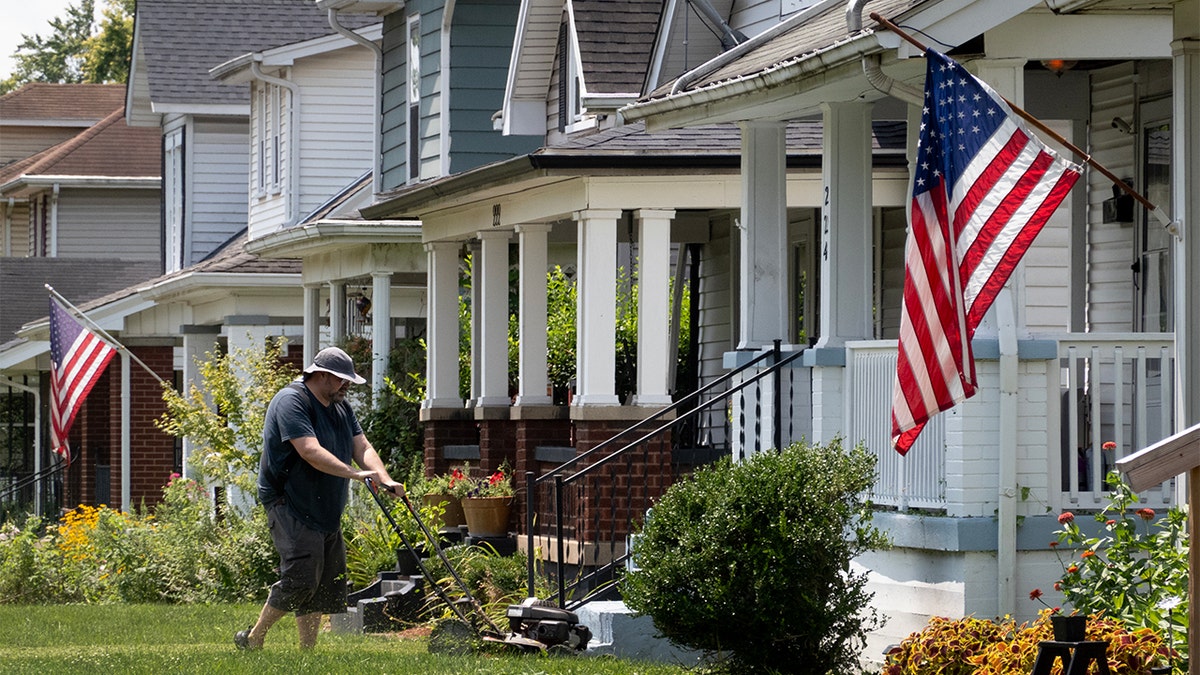
Houses on McKinley Street in Middletown, Ohio. (Scott Olson/Getty Images)
“The raggedy old hotel had dated furniture, small rooms, ugly pink walls, and an abundant supply of cockroaches,” wrote the younger Palin. “I’d never even seen a cockroach before. Reporters might not think Wasilla is the prettiest town in the world, but at least we don’t have roaches.”
And Bristol Palin didn’t even get the name of the town right. She dished about “Middleton,” not Middletown.
But like many places in America, Middletown rallied from the 2008 economic calamity. While major banks that occupied three of four corners in downtown Middletown closed, Cincinnati State opened a branch campus in the old Cincinnati, Gas & Electric building. That fueled a mini-wave of a few coffee shops and restaurants downtown. There’s even an Italian steakhouse now. They paved the streets.
“Middletown Dreams” is a mid-80s track by the Canadian rock band Rush. Late Rush drummer and lyricist Neil Peart said he chose that title “because there is a Middletown in almost every state in the U.S. It comes from people identifying with a strong sense of neighborhood.”
One lyric goes like this:
“Dreams transport the ones / Who need to get out of town…”
One can certainly appreciate that sentiment considering the portrait of Middletown painted by Vance in “Hillbilly Elegy.”
But Rush’s song ends with this:
“And life’s not unpleasant / In their little neighborhood / They dream in Middletown.”
Middletown may be a place of nightmares to some, but it’s also a place of dreams. Think of all the people from eastern Kentucky who migrated to Middletown to work at ARMCO.
They had dreams — dreams of a better life and better wages. Middletown certainly fueled my dreams. I suspect they did the same for JD Vance, too.
And dreaming in Middletown — all of the Middletowns — is a very American story.
Read the full article from Here

Detroit, MI
5 things to watch: Lions-Giants joint practices
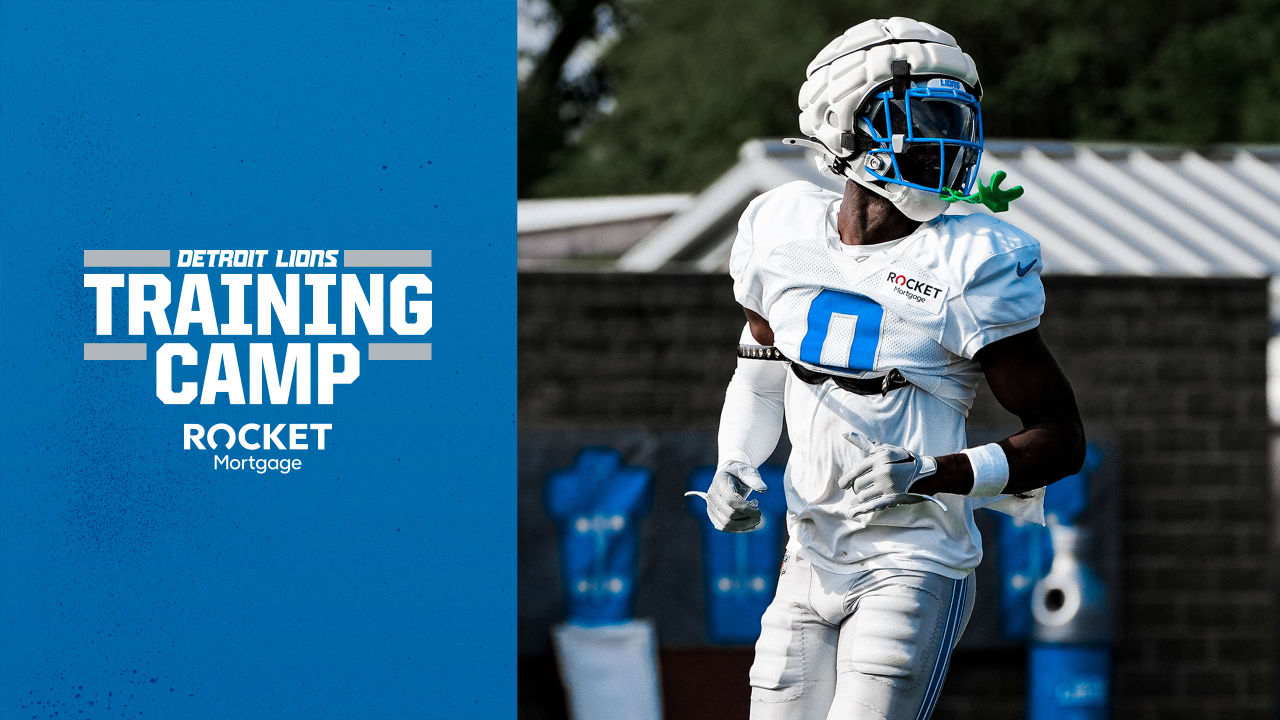
3. New kickoff rule
Special teams coordinator Dave Fipp has spent a lot of time figuring out the best combinations of personnel for the new kickoff play and who might fit best returning kicks. It will be interesting to see the two teams practice the play during the week.
It’s good to go against another team early on to see how they are strategizing the play and what Fipp and the Lions might need to do to counter.
“There’s a lot of unknown, I think,” Fipp said last week. “At the end of the day what I told our players is, we’ll be ready to adjust on the scheme and all that stuff, but any play in football is going to come down to the same old things.
“It’s going to come down to blocking or evading a blocker, and then it’s going to come down to tackling and it’s going to come down to making somebody miss. So, at the end of the day, we’ll spend a lot of time on fundamentals and technique, and we’ll also be ready to adjust and adapt to any other thing that we see out there that we think is successful.”
4. D-line and secondary gains
This Lions’ defense will be much improved in 2024 if they can get a more consistent pass rush from their front four and better play all around from their revamped secondary. So far the first two weeks of training camp those two areas look to be the most improved on the entire team.
“Man, we are getting off blocks, you even see improvement in players like (Alim McNeill) Mac, (Aidan Hutchinson) Hutch, just taking another step, Levi (Onwuzurike), certainly (Marcus) Davenport’s back out there now and he’s practicing,” Campbell said.
“And then with the DBs, man, you feel us challenge, we’re challenging on the perimeter and they’re covering pretty good down the field, so when you do that, you can’t help but get better.”
It’s looked good so far against Detroit’s offense, which is one of the better units in the league. The hope is the defense really has the edge and gets the better of a Giants’ offense that wasn’t as productive last year and doesn’t have all the weapons both upfront and at the skill positions as the Lions have.
Milwaukee, WI
Death of Black man pinned down by security guards outside Milwaukee hotel ruled homicide

MILWAUKEE — The death of Black man who was pinned to the ground by security guards outside a Milwaukee hotel has been ruled a homicide, according to an autopsy released Friday.
D’Vontaye Mitchell suffocated while being restrained on June 30 and was suffering from the effects of drugs in his system, according to findings issued by the Milwaukee County Medical Examiner’s office.
The findings state that Mitchell’s immediate cause of death was “restraint asphyxia and toxic effects of cocaine and methamphetamine.” The homicide ruling confirms the medical examiner’s office’s preliminary finding made last month that Mitchell’s death was a homicide
The Milwaukee County District Attorney’s office said previously that it and police investigators were awaiting full autopsy results and that the case was being reviewed as a homicide.
The Associated Press sent an email and left a phone message Friday for the district attorney’s office seeking comment on the autopsy report and asking whether its findings would be taken into consideration when decisions on charges are made.
The autopsy, signed Wednesday by assistant medical examiner Lauren A. Decker, states that Mitchell’s “injury” happened while he was “restrained in prone position by multiple individuals after drug (cocaine, methamphetamine) use.”
It also states that Mitchell had the “significant conditions” of hypertensive cardiovascular disease and morbid obesity. A separate demographic report released by the medical examiner’s office states that Mitchell was 6 feet (1.8 meters) tall and weighed 301 pounds (137 kilograms).
The medical examiner’s office also released an investigative report on Friday that said Mitchell “was restrained by four people after being combative in the hotel lobby.”
READ MORE | Milwaukee, Wisconsin hotel employees fired after death of Black man who was pinned to ground
“He reportedly went unresponsive while staff awaited police arrival,” the report said.
Mitchell died after he was held down on his stomach by security guards outside a Hyatt Regency hotel. Police have said he entered the hotel, caused a disturbance and fought with the guards as they were escorting him out.
Relatives of Mitchell and their lawyers had previously reviewed hotel surveillance video provided by the district attorney’s office. They described seeing Mitchell being chased inside the hotel by security guards and then dragged outside where he was beaten.
Civil rights attorney Ben Crump, who is part of a team of lawyers representing Mitchell’s family, has said video recorded by a bystander and circulating on social media shows security guards with their knees on Mitchell’s back and neck. Crump has also questioned why Milwaukee authorities had not filed any charges related to Mitchell’s death.
Crump and Mitchell’s family said Friday in a statement that the autopsy findings and homicide ruling “demand immediate charges against” those involved in Mitchell’s death.
“Mitchell was in the midst of a mental health crisis and, instead of abiding by their duty to protect and serve, the security officers and other Hyatt staff used excessive force that inflicted injury resulting in death,” the statement says. “We will not rest until we achieve justice for Mitchell and his grieving family.”
Aimbridge Hospitality, the company that manages the hotel, said previously that several employees involved in Mitchell’s death have been fired.
Copyright © 2024 by The Associated Press. All Rights Reserved.
Minneapolis, MN
Red light runner charged almost a year after hitting, killing a mother in Minneapolis

Mother killed crossing Minneapolis street
A mother was killed, and her two children were injured, after being hit by a car crossing a street in south Minneapolis. FOX 9’s Rose Schmidt has the latest details on the deadly incident.
MINNEAPOLIS (FOX 9) – A man has been charged almost a year after he hit and killed a mother who pushed her children out of the way before being hit.
Duaale Abdirasaq Hirsi, 23, has been charged with criminal vehicle homicide and criminal vehicular operation almost 11 months after the crash.
An arrest warrant is currently out for Hirsi.
PAST COVERAGE: Mother killed, 2 children injured after being struck by car in Minneapolis
What happened?
According to the charges, on Sept. 22, 2023, Minneapolis police responded to a report of a vehicle hitting a pedestrian while crossing the street near Lake Street and Blaisdell Avenue South.
At the scene, a woman, who was then identified by police as 36-year-old Annalee Wright was found lying in the street, court documents say.
The complaint states that Wright and her two children, aged 14 and six, were crossing Lake Street on a green light when a vehicle being driven by Hirsi allegedly ran a red light, hitting Wright.
Before being hit, Wright had pushed her children out of the way, but her 14-year-old child was still sideswiped, the charges say.
According to court documents, Wright was taken to the hospital where she died three days later due to severe head injuries and multiple fractures. The 14-year-old suffered a fractured arm and abrasions due to being sideswiped.
Hirsi stayed at the scene after hitting Wright and her child, the charges said.
What witnesses saw
One witness told police he was on an MTC bus that was on Blaisdell Avenue when the incident occurred. The bus dropped off Wright and her children near the intersection of Blaisdell Avenue and Lake Street, court documents said.
The witness then said, as the bus was about to enter the intersection on a green light, he saw two cars in the left lane on Lake Street heading west stopped at the red light. Hirisi was in the right lane and reportedly did not stop for the red light and “sped through the intersection,” the witness continued.
According to court documents, the witness said the bus had to brake to avoid hitting Hirsi, and Hirsi then hit Wright.
Another witness who was driving in the left lane on Lake Street with her boyfriend at the time of the incident told police she was about to merge into the right lane, and had room to do so, when Hirsi allegedly “aggressively” sped up on her, so she moved back into the left lane, the charges said. She also said that Hirsi reportedly “glared at her”, which took his eyes off the road.
The witness continued to say that Hirsi continued to “glare” at her as he accelerated and passed her, running the red light and hitting Wright, the complaint states.
Hirsi allegedly never used his brakes before hitting Wright.
The witness’ boyfriend gave the same description of what happened, and also described Hirsi losing control of his car after hitting Wright, court documents say.
What surveillance footage shows
Court documents say that surveillance video shows that the intersection was busy during the incident. All the cars in the video had their headlights on, but Hirsi’s car did not.
The video shows Hirsi failing to stop at the red light, just missing a car that was in the intersection, and hitting Wright. The video also confirmed that Hirsi did not brake when the light was red, and did not brake before hitting Wright and her child, the charges say.
How fast was Hirsi driving?
The speed limit on Lake Street was 30 mph, and at the scene, Hirsi told police he was driving on the right late at about 45 mph, court documents said.
Hirsi allegedly made “inconsistent” statements about the color of the traffic light to police, the charges state. He did reportedly admit to speeding.
-

 Mississippi5 days ago
Mississippi5 days agoMSU, Mississippi Academy of Sciences host summer symposium, USDA’s Tucker honored with Presidential Award
-

 Politics1 week ago
Politics1 week agoRepublicans say Schumer must act on voter proof of citizenship bill if Democrat 'really cares about democracy'
-
World6 days ago
More right wing with fewer women – a new Parliament compendium
-

 News1 week ago
News1 week agoVideo: Kamala Harris May Bring Out Trump’s Harshest Instincts
-

 Politics1 week ago
Politics1 week agoTrump announces to crowd he 'just took off the last bandage' at faith event after assassination attempt
-

 World1 week ago
World1 week agoIsrael says Hezbollah crossed ‘red line’, strikes deep inside Lebanon
-

 Politics1 week ago
Politics1 week agoHarris failed to combat ‘root causes’ of illegal immigration, former Border Patrol union chief says
-

 Movie Reviews1 week ago
Movie Reviews1 week agoDeadpool & Wolverine Movie Review: Ryan Reynolds brings the house down in this bloody spectacle













